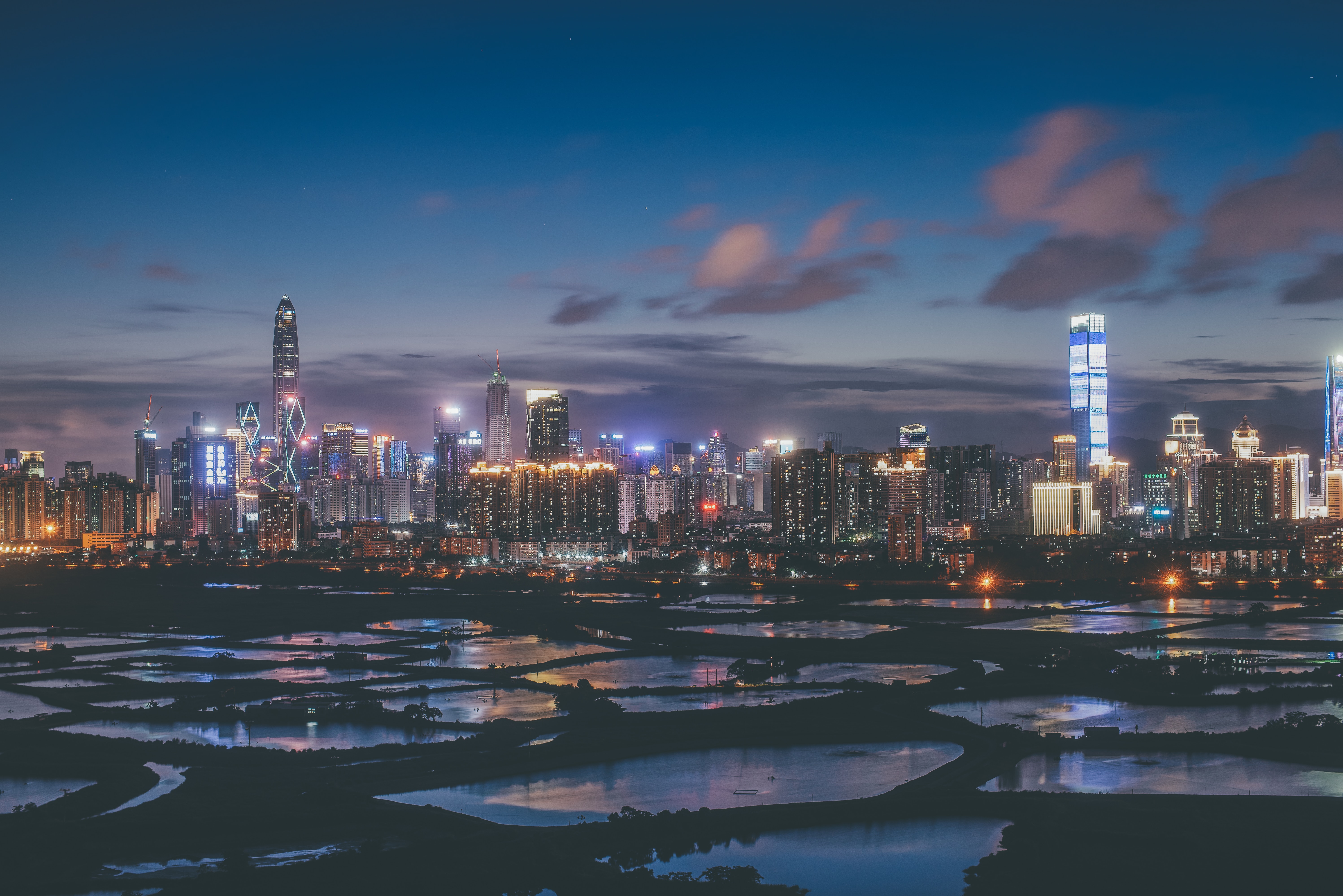Shenzhen in southeastern China is a modern city with over 12 million residents. Since its establishment in 1979 as the country’s first special economic zone, its economy and industrial base have been growing, but so has its environmental protection measures. Some of these measures and good practices were highlighted at last month’s Shenzhen Eco-Environmental Protection Summit (Chinese link).
In the past 40 years, Shenzhen has become a green industrial transformation leader, promoting a circular and low-carbon transition of such traditional industries as steel and phasing out low-end industries like original equipment manufacturing of electronics. In fact, taking advantage of the digital revolution, the city has leapfrogged from the bottom of the "Made in Shenzhen" manufacturing value chain to a more innovation-driven "Created in Shenzhen" model.
Shenzhen is at the forefront of the innovation of market economic policies for environmental protection. It is the first city in China to start carbon trading and issue carbon bonds with turnover exceeding 100 million Chinese renminbi ($14 million). And, it has taken the lead in piloting pollution liability insurance, which by the end of July 2018 counted 1,066 enterprises in 10 industries in Shenzhen that were included in the list of the insured.
Shenzhen is also a forerunner in greening the construction industry. It has taken the lead in setting up green building standards and issuing a building energy conservation regulation. Currently, Shenzhen has the largest scale and density of green buildings in China, including green schools and eco-industrial parks.
Throughout China, Shenzhen is known for its progressive system of laws, regulations and standards. About two-thirds of the 20-plus laws and regulations on environmental protection were enacted in Shenzhen before they were nation-wide, including the daily penalty system, which will continue to fine a polluting entity on a daily basis until the situation is fixed. This system was initiated by the Regulations of Shenzhen Special Economic Zone on Environmental Protection and was later included in national legislation. In addition, all companies with pollution sources are listed so public representatives can ask authorities to investigate any suspected environmental misconduct – this is known as “à la carte” law enforcement.
Other effective practices include the formulation of the first local sewage permit regulations in China and the implementation of the pollution source classification management system. Shenzhen is also the only city in the country where the burning of highly polluting fuels is banned, and the first city in China to carry out the analysis of PM2.5 ambient concentrations, implement pollution control for ocean-going vessels and use 100% renewable energy buses, as well as have the highest proportion of installed capacity of clean energy. Thanks to a system of "Shenzhen standards" for the environment, the number of haze days dropped from 187 days in 2004 to 20 days in 2018, giving the city its “blue skies" reputation.
While Shenzhen is very urban, it does have a fair amount of urban open spaces and protected areas. More than 1,000 parks have been established in an effort to improve the city's ecological environment. In fact, the ecological space, which accounts for about 50% of the city's land area, has been protected. The city is also taking the lead in carrying out a comprehensive land-based ecological investigation and assessment, and is the first to deploy the urban ecological monitoring network throughout China. In addition, there are more than 22,000 environmental protection volunteers who are active in environmental monitoring and education, and there are 11 environmental education centres, seven nature schools and more than 140 environmental protection organizations – the most in China.
Another good practice worth noting is the Carbon Coin service platform, which encourages citizens to practice a green and low-carbon lifestyle and reward them with Carbon Coins when, for example, the platform user chooses to commute by bicycle. These CO2 reductions are in turn converted into carbon coins which can be redeemed for merchandise or goods within a network of affiliated merchants.
Shenzhen is not a city that will rest on its laurels and will continue to serve as a model for industrial transformation that balances industry with ecology and livability. Hopefully, its four decades of experience and success can be mainstreamed and shared with other parts of China and beyond.

This article was originally written in Chinese. It was translated by Qian Chengchen.

